America’s Cup: Secrets of a Kiwi Pedaller
Published on April 2nd, 2017
by Duncan Johnstone, Stuff.co.nz
Subterfuge is a key element of the America’s Cup and Team New Zealand rookie Guy Endean quickly discovered the fine art of that as he tried to book a ride to Bermuda.
The Youth America’s Cup winner was taken on as a grinder but unexpectedly found himself enveloped in the syndicate’s radical switch to pedal power.
Suddenly legs became more important than shoulders and arms. But most important of all was secrecy. It led to some awkward moments with family and friends, right up till the remarkable details of Team New Zealand’s 49-foot race boat was unveiled six weeks ago.
“I was on Great Barrier holidaying at Christmas with my mates and I’d slip away on my mountain bike for rides of two to four hours,” chuckles Endean. “I’d come back and they’d say, ‘I didn’t realise you were into your cycling that much’.
“I’d tell them it was a great way to keep up my base fitness with low impact. That seemed to do the trick.”
A couple of days before the boat’s official launch the Team New Zealand “grinders” completed a furious morning ride along Auckland’s waterfront. When they arrived at St Heliers, Endean bumped into another friend and another awkward moment as his altered body shape didn’t go unnoticed.
Again, the 28-year-old bluffed his way through with a sigh of relief.
“We knew if word got out, it would spread quickly. That was a really hard part of this,” Endean says aboard Team New Zealand’s chase boat as he waits for his 45-minute shift in the saddle on one of their final training runs last week before the boat is packed up and air-freighted to Bermuda.
But there were physical challenges to go with the mind games. Endean isn’t tall but he’s a ball of muscle. He had to shift that power south and now he’s got a set of lycra-covered thunder thighs that would do most Olympic sprint cyclists proud.
He also had to drop weight – a lot of weight. From 98kg, the order was for him to get down to 87.5kg and maintain that mark which is the average weight allowed for the six-man crew.

The Team New Zealand’s power men, with Guy Endean second left, work through another exhausting cycling session. @ Emirates Team New Zealand
He will be a specialist power source for the light air conditions among the four men on the pedals as they cycle furiously to provide the power for the ever-hungry systems that control the massive wingsail and daggerboards that allow the foiling best to hit speeds “high in the 40 knots zone”.
A sailor with a strong keelboat background and experience in boatbuilding, he fell in love with catamarans when he helped New Zealand win the Youth America’s Cup in San Francisco in 2013.
Making Bermuda was his dream and Endean now finds himself alongside gifted helmsman Peter Burling, Blair Tuke and Andy Maloney, as members of that youth crew who have graduated to the sport’s biggest stage.
He thought that dream might have been shattered when Team New Zealand sprung the cycling surprise on him.
“I was pretty worried to be honest …. whether I could do it, whether I could fit in,” he said of the adjustments required. “You use quite different muscle groups. Talking to a few people it was about putting a few kilometres on the legs, get fit and ‘you’ll be able to transfer that fitness into the legs and get on with it’.”
The grinding squad were quickly doing 100km rides. But the bulk of their fitness came from slogging away behind closed doors on stationary wattbikes in the team’s gym.
“That was huge for us. There is no hiding from those … it’s just the numbers coming out that reflect how hard you push and your progress. They’ve been an amazing tool. The beauty is they’re like a rowing machine – you get those numbers and you are constantly trying to better yourself. One of the best ways to improve your fitness is to take yourself on.”
But there was massive competitiveness and camaraderie among the squad.
“It was always healthy competition and the best part about that was there was no real leader from the beginning. The lead changed a lot. Everyone was pushing as hard as they could.
“As far as technique goes it’s more just spending some time in the saddle and getting your legs to adapt to that kind of fitness. It wasn’t a quick transition … it was about nine months into it when I started to get that fitness coming on strong and being able to push hard.”
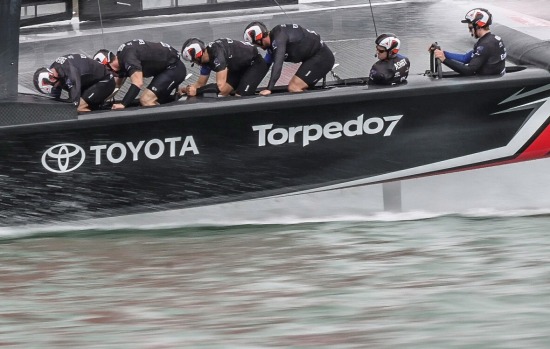
Team New Zealand’s pedal powered 49-foot race boat in full flight on Auckland’s Waitemata Harbour. @ Emirates Team New Zealand
Then came the moment to turn the practice into performance on the boat.
“It was a magic feeling, the speed just grabs you the first time you’re on it,” Endean remembers of lifting on to the foils on the state-of-the-art cat. “It’s amazing how quickly you get used to it. But there’s still the odd occasion where you poke your head up from the pedestal and you look out and it’s quite frightening.”
He says the boat is remarkably stable as a cycling platform. The challenges come in the turns with the severe G-forces.
“If it’s a sharp turn, it’s a matter of getting into position and holding and not letting go. If you do, you’ll be sent over the side for sure. The idea is to keep pedalling.”
Then comes the transfer to the other hull – the danger move and one where opponents and critics have questioned the practicality of getting off one bike and across to the other. Clicking out of the cleats on adapted mountain-biking shoes and quickly re-engaging.
“We were always a little bit nervous about the transition between the two hulls. But the adrenalin takes over and you are there before you know it.”
The transitions have got more smooth and they are tinkering with their numbers, sometimes riding two per hull, sometimes one and three, searching for the right combinations
“We are just experimenting with everything we can at this point and trying all these different things to find good formations to pull off certain manoeuvres.”
Higher winds increase the challenge.
“The boat is more lively in heavier air so you have to think harder. You have a lot more wind over the deck. Think about walking around in 40 knots of air … we are seeing a bit more than that during a turn across the boat so it’s important to stay on your feet.”
Though he is now “head-down, bum-up” he still gets a ton of satisfaction from a pure sailing perspective.
“Oh yeah, the physical side of the sport has always been a big part for me and that’s where my interest remains.
“When you step on to the boat your are definitely more into a cycling role. But we are also relying on our own cues to get around the boat. There are going to be a lot of different manoeuvres coming our way and we have to be able to react at those as a sailor.”
A sailor and a bit of a secret agent. That’s the America’s Cup.
Background: The 35th American’s Cup has attracted six teams (5 challengers and 1 defender) that will compete in the new 15-meter AC Class, with a series of qualifiers beginning on May 26, 2017 that lead to the start of the America’s Cup Match on June 17, 2017. Complete schedule.


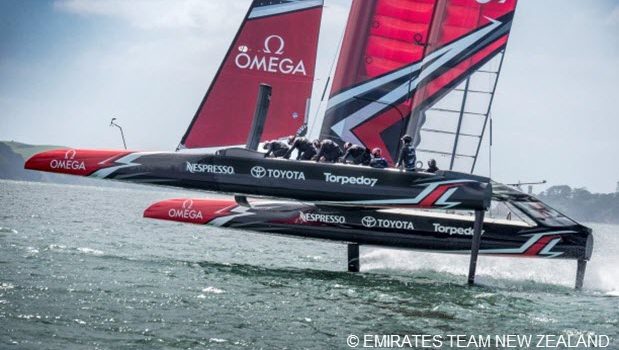
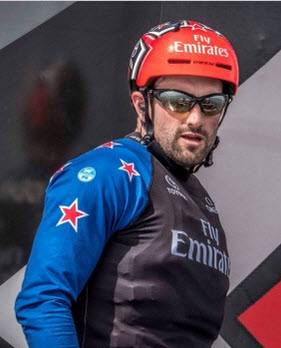


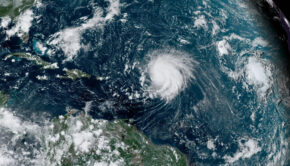
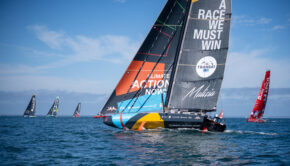
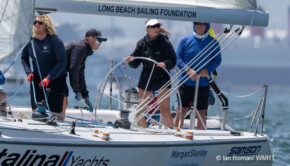
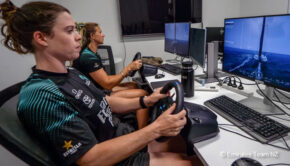
 We’ll keep your information safe.
We’ll keep your information safe.